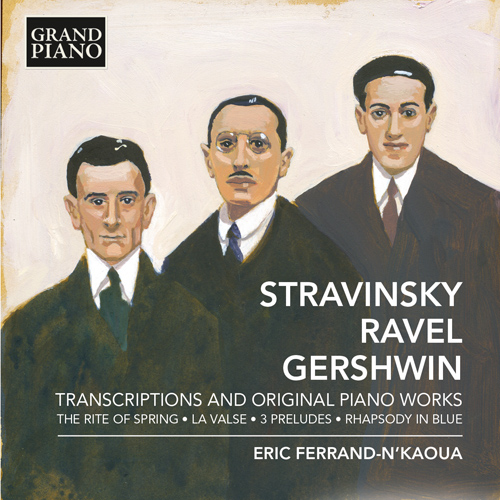
About this Release
“It all started with the Rite of Spring and a concert at the Paris Conservatoire in May 2013, celebrating the 100-year anniversary of Stravinsky’s most famous work. But instead of sitting in the audience, listening to the roaring orchestra, I had to generate the hypnotic power of raw rhythms and rapturous harmonies by myself, through Sam Raphling’s crazy piano transcription. Believe it or not, I felt this music “got that swing”. Then, surrounding the Rite with Ravel’s own piano arrangement of La Valse, followed by Gershwin’s evocative Preludes and powerful Rhapsody in Blue, all that came naturally, as if my piano was to tell the odyssey of rhythm and colour through the first quarter of the last century, the musical journey that led to jazz.” — Eric Ferrand-N'Kaoua
STRAVINSKY • RAVEL • GERSHWIN
Transcriptions and Original Piano Works
- Eric Ferrand-N'Kaoua, piano
Stravinsky’s groundbreaking Rite of Spring is heard on this recording in the formidable yet seldom performed solo piano transcription by the 20th-century American composer and pianist Sam Raphling. It is coupled with Ravel’s own virtuosic transcription of La Valse, Gershwin’s jazz-infused 3 Preludes and his own solo piano version of Rhapsody in Blue.
This recording was made on a modern instrument: Steinway, Model D
Distribution note: Only available in the United States
Tracklist
|
Stravinsky, Igor
|
|
Le sacre du printemps (The Rite of Spring) (arr. S. Raphling for piano) (1913) (00:31:00 )
|
|
1
Part I: Adoration of the Earth: Introduction - (00:03:02)
|
|
2
Part I: Adoration of the Earth: The Augurs of Spring - Dances of the Young Girls - (00:03:02)
|
|
3
Part I: Adoration of the Earth: Ritual of Abduction - (00:01:24)
|
|
4
Part I: Adoration of the Earth: Spring Rounds - (00:03:13)
|
|
5
Part I: Adoration of the Earth: Ritual of the Rival Tribes - Procession of the Sage - The Sage - (00:02:52)
|
|
6
Part I: Adoration of the Earth: Dance of the Earth (00:01:19)
|
|
7
Part II: The Sacrifice: Introduction - (00:04:09)
|
|
8
Part II: The Sacrifice: Mystic Circles of the Young Girls - (00:02:31)
|
|
9
Part II: The Sacrifice: Glorification of the Chosen One - (00:01:34)
|
|
10
Part II: The Sacrifice: Evocation of the Ancestors - (00:00:48)
|
|
11
Part II: The Sacrifice: Ritual Action of the Ancestors - (00:03:32)
|
|
12
Part II: The Sacrifice: Sacrificial Dance (00:04:31)
|
|
Ravel, Maurice
|
|
13
La valse (version for piano solo) (1920) (00:11:42)
|
|
Gershwin, George
|
|
3 Preludes (1926) (00:06:00 )
|
|
14
No. 1 in B-Flat Major: Allegro ben ritmato e deciso (00:01:37)
|
|
15
No. 2 in C-Sharp Minor: Andante con moto e poco rubato (00:03:25)
|
|
16
No. 3 in E-Flat Minor: Allegro ben ritmato e deciso (00:01:10)
|
|
Rhapsody in Blue (version for piano) (1924) (00:15:00 )
|
|
17
Molto Moderato - Moderato assai - Poco agitato - Tempo giusto - Meno mosso e poco scherzando (00:10:03)
|
|
18
Andantino moderato (00:02:27)
|
|
19
Agitato e mesterioso (00:02:59)
|
The Artist(s)
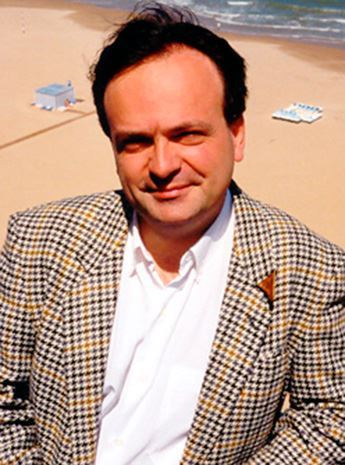
French pianist Eric Ferrand-N’Kaoua was born near Paris in 1963. He studied with Madeleine de Valmalète from an early age and soon entered the Conservatoire National Supérieur, where he obtained first prize with distinction in piano when aged only fourteen, soon followed by a first prize in chamber music.
EFN’K has premièred works by Thierry Lancino, Philippe Racine and Christopher Culpo. His eclectic repertoire and his interest in jazz allow him to blend Bach’s Goldberg Variations, or Liszt’s transcription of the Symphonie fantastique with jazz-inspired pieces in the same recital.
The Composer(s)
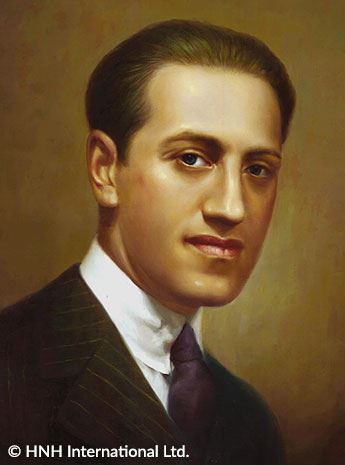 In a period in which American nationalist music was developing with composers of the calibre of Aaron Copland and others trained in Europe, George Gershwin, the son of Russian Jewish immigrant parents, went some way towards bridging the wide gap between Tin Pan Alley and serious music. He won success as a composer of light music, songs and musicals, but in a relatively small number of compositions he made forays into a new form of classical repertoire.
In a period in which American nationalist music was developing with composers of the calibre of Aaron Copland and others trained in Europe, George Gershwin, the son of Russian Jewish immigrant parents, went some way towards bridging the wide gap between Tin Pan Alley and serious music. He won success as a composer of light music, songs and musicals, but in a relatively small number of compositions he made forays into a new form of classical repertoire.  French, of paternal Swiss and maternal Basque descent, Ravel combined skill in orchestration with meticulous technical command of harmonic resources, writing in an attractive musical idiom that was entirely his own in spite of contemporary comparisons with Debussy, a composer his senior by some 20 years.
French, of paternal Swiss and maternal Basque descent, Ravel combined skill in orchestration with meticulous technical command of harmonic resources, writing in an attractive musical idiom that was entirely his own in spite of contemporary comparisons with Debussy, a composer his senior by some 20 years. 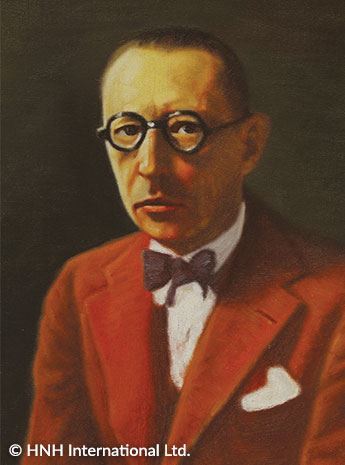 The son of a distinguished Russian singer, Stravinsky spent his earlier years in Russia, either in St Petersburg or, in the summer, at the country estates of his relatives. He studied music briefly with Rimsky-Korsakov but made a name for himself first in Paris with commissions from the impresario Diaghilev, for whom he wrote a series of ballet scores. He spent the years after the Russian Revolution of 1917 in Western Europe and in 1939 moved to the United States of America. There in the post-war years he turned from a style of eclectic neoclassicism to composing in the twelve-note technique propounded by Schoenberg. A versatile composer, inventive in changing styles, he may be seen as the musical counterpart of the painter Picasso.
The son of a distinguished Russian singer, Stravinsky spent his earlier years in Russia, either in St Petersburg or, in the summer, at the country estates of his relatives. He studied music briefly with Rimsky-Korsakov but made a name for himself first in Paris with commissions from the impresario Diaghilev, for whom he wrote a series of ballet scores. He spent the years after the Russian Revolution of 1917 in Western Europe and in 1939 moved to the United States of America. There in the post-war years he turned from a style of eclectic neoclassicism to composing in the twelve-note technique propounded by Schoenberg. A versatile composer, inventive in changing styles, he may be seen as the musical counterpart of the painter Picasso. Reviews
“EFN’K has a formidable technique and an ability to bring clarity to the most complex of textures.” – MusicWeb International
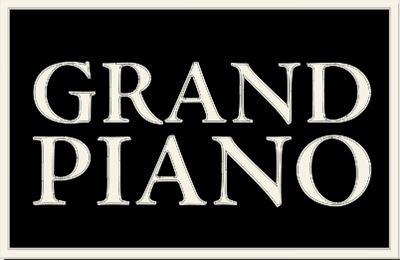

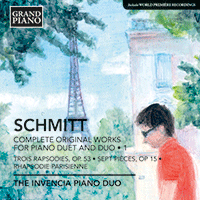
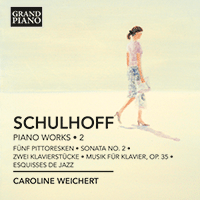

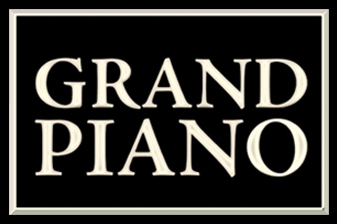 Grand Piano has gained a reputation for producing high quality recordings of rare keyboard gems. Dedicated to the exploration of undiscovered piano repertoire, the label specialises in complete cycles of piano works by many lesser-known composers, whose output might otherwise have remained unknown and unrecorded.
Grand Piano has gained a reputation for producing high quality recordings of rare keyboard gems. Dedicated to the exploration of undiscovered piano repertoire, the label specialises in complete cycles of piano works by many lesser-known composers, whose output might otherwise have remained unknown and unrecorded.






